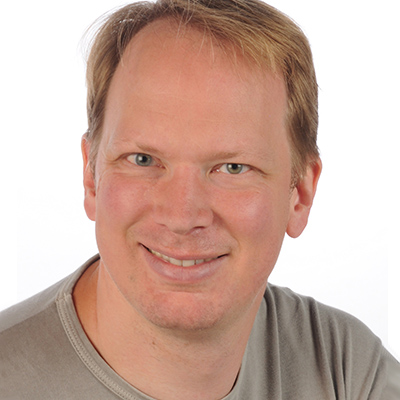“The birth of my children made me realize how relevant our experiments are”

Dr. Betz, what scientific topic are you working on right now?
I’m engaged on the mechanics of cells. Cells move, exert pressure and are influenced by forces. The question I ask myself is: what are the mechanics behind all these processes? To be precise, what I want to know is how cells change their shape or how they regulate their mechanical properties so that they can do what they are supposed to do in the body. A cancer cell in a tumour, for example, is mostly hard and consists of a rigid structure. If it wants to travel around the body, though, it has to force its way through small spaces in the tissue. The only reason it manages to do that is because it can switch over to “fluid” mode. In other words, the same cell that was still rigid just now, is able to modify its components so skilfully that its structure matches the new task. How and why do cells manage to do that? And using what method? As a physicist I measure forces, look at material flows in cells when they divide, for example, and develop suitable models. Mostly I ask myself questions that appear to be easy – but which have an explosive power in biophysics because this field of research is still comparatively new, and answering even easy questions can quickly become complicated. But what I like to do most of all is find easy answers to my questions. We physicists always want to explain things as simply as possible.
What characterizes you personally as a scientist?
I’m the embodiment, so to speak, of an interface between biology and physics. Nature doesn’t care whether a process in the body is a chemical or a mechanical one. As a physicist, however, I’m an exotic creature for biologists, who tend to concentrate more on biochemical questions. In the questions I’m researching into, I try to bring more physics into the biology and help to bring both fields closer together.
What’s your great aim as a scientist?
I’d like to be able to understand the material properties of cells in the body. That doesn’t sound terribly exciting at first glance – but we can learn so much from the body. For example, if I can explain how the cancer cell I was just talking about transforms its structure, that helps not only in medicine but also in material sciences.
What’s your favourite “toy” for research – and what can it do?
So-called optical tweezers, with which, using a laser, I can hold and move cells without damaging them. I’ve already constructed a lot of these optical tweezers, and soon my new laboratory in Münster will be getting two more. I’m also continuing to develop the technology – although as a rule only to the extent that I can use it to answer the scientific questions I have.
Can you remember your happiest moment as a scientist?
It was the birth of my two children. Quite apart from my personal happiness, I realized yet again how relevant our scientific experiments are for all our lives.
And what was your biggest frustration?
What I find most frustrating is when scientists that I’ve worked with on something suddenly lose their interest in our collaboration. Together, we might have discovered and developed something exciting.
Which scientific phenomenon still regularly fascinates you today?
The interaction of light and material. There’s a light-mill that’s been standing on my window sill for years. It’s a nice toy, in my opinion. I know exactly why the mill turns faster when light hits it, but I still think it’s just great that this happens at all. Watching it inspires me again and again.
What big scientific question would you like to have an answer to?
How does an entire organism evolve from single cells? It all starts with cell division. What I’d really like to know is how a complex and coordinated process evolves out of individual events that appear to be spontaneous.

